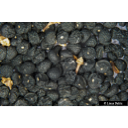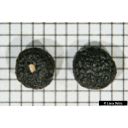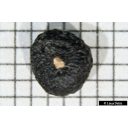Useful information about the taxon (species, subspecies, variety...)
Asparagus officinalis L. 1753
Asparagaceae
(APG IV)Akzessionnummer: SYS-654-2022
Pflanzjahr: 0
Taxon concept: The Plant List (2010)
Asparagus officinalis L. - Accepted: Asparagus officinalis L. bei Zander 2008; Familie: Asparagaceae (Zander 2008)Asparagus officinalis L. - Accepted: Asparagus officinalis L. bei The Plant List (2010); Familie: Asparagaceae (APG III)Asparagus officinalis L. - Accepted: Asparagus officinalis L. bei The Plant List (2014), version 1.1; Familie: Asparagaceae (APG III)Asparagus officinalis L. - Accepted: Asparagus officinalis L. bei The Plant List (2014), version 1.1; Familie: Asparagaceae (APG IV)Asparagus officinalis L. - Accepted: Asparagus officinalis L. bei BfN Checklist Flora DE; Familie: Asparagaceae (APG IV)Asparagus officinalis L. - Accepted: Asparagus officinalis L. bei World Flora Online - APG IV (Angiosperms); Familie: Asparagaceae (World Flora Online - APG IV (Angiosperms))
- Life form
- herbaceous, terrestrial, perennial
Breunig, T. et al. (2021): Rote Liste der Farn- und Blütenpflanzen Baden-Württembergs.; Bundesamt für Naturschutz (BfN) (1999-2001 and ongoing): Floraweb - Daten und Informationen zu Wildpflanzen und zur Vegetation Deutschlands. www.floraweb.de.; Erhardt, W., Götz, E., Bödeker, N. & Seybold, S. (2008): Der große Zander. Enzyklopädie der Pflanzennamen. Band 2. Arten und Sorten. Eugen Ulmer KG, Stuttgart (Hohenheim), 18. Aufl., 2103 S.; Haider, M. et al. (2005): Wildbienenkataster. See: https://www.wildbienen-kataster.de; Kew Gardens and Collaborators (2017): Plants of the World Online. see: plantsoftheworldonline.org.; Maurizio, Anna et al. (1982): Nektar und Pollen - die wichtigsten Nahrungsquellen der Honigbiene. 4. Ehrenwirth, München, 3, überabeitete Auflage; Metzing, D. et al. (2018): Rote Liste und Gesamtartenliste der Farn- und Blütenpflanzen (Trachaeophyta) Deutschlands .; Oberdorfer, E. (2001): Pflanzensoziologische Exkursionsflora. Für Deutschland und angrenzende Gebiete. Eugen Ulmer Verlag, Stuttgart, 8., stark überarb. u. erg. Aufl, 1056 S. 978-3-8001-3131-0.; Pritsch, Günter et al. (2007): 200 Trachtpflanzen erkennen und bewerten.. Kosmos, Stuttgart; Schick, B. & Spürgin, A. (1997): Die Bienenweide. Eugen Ulmer Verlag, Stuttgart, Auflage: 4., völlig neubearb. u. erw. A., 216 S. 978-3800174188.; The International Plant Names Index (2009). Published on the Internet http://www.ipni.org; Courtesy to IPNI, 2009. Exported from IPNI at date: 2009-09-22 20:17:51; Westrich, P. et al. (2018): Die Wildbienen Deutschlands.. Ulmer Verlag ISBN 978-8186-0123-2.;
Diese Webseite verwendet Google Maps, um Karten und Standorte von Pflanzen in den Hohenheimer Gärten anzuzeigen. Dadurch werden unter Umständen Daten an Google weitergeleitet, was mit einer Verarbeitung Ihrer personenbezogenen Daten verbunden sein kann. Die Datenschutzerklärung von Google finden Sie hier: Datenschutzerklärung von Google



